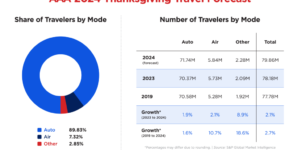Post-Covid changes in the workplace have created a slew of new issues and exposures for employers.
From the changing attitudes toward job flexibility and accommodations to the need for employee training to prevent pay-related litigation, employers are navigating new needs and demands on all employment practices liability (EPL) fronts.
During a recent PLUS conference, the ” reflected on the changes they’ve seen over the last few years, how employers can adjust to the current landscape, and what might lie ahead in 2023.
Boomerang unemployment, a possible looming recession and a work environment in flux are forcing a further change in approach when it comes to employer exposure.
Shifting Workplace Dynamics
Low unemployment, the move toward remote work and the “great resignation” created a shift in power that gave employees certain advantages when it came to negotiating in the workplace, whether it was the terms of a new job or adjustments for existing positions.
“The power dynamic has shifted,” said panelist Talene Megerian Carter, EPL thought and product leader, WTW. “I think now the employees definitely do have the power; they have choices.”
“Our clients are having to rethink how they go about retaining and attracting talent,” Carter said. “They have to reimagine how they go about doing that. They have to reimagine the workplace…Right now, I think in order to remain competitive, they have to be flexible.”
Peter Woo, principal, Jackson Lewis, said that employers also need to focus on creating benefits for employees who are returning to the workplace after a long stretch of remote work.
“We’re seeing employers trying to pull back from fully remote to more of a hybrid model. And, you know, not everyone is comfortable with that, of course,” said Woo. “So, for those trying to go into that hybrid model or even going full-time, what we’ve been advising a lot of our clients is we need to provide incentives and programs to promote people to come into work to provide them with the opportunity to connect with people again.”
Redefining Accommodations Post COVID
“At this point, following COVID, folks are asking for a lot more than a modified keyboard or to go to the doctor in the middle of the day,” said moderator Dove Burns, partner, Obermayer Rebmann Maxwell and Hippel. “The idea of accommodations has changed dramatically.”
There’s been a revolution and expansion of what employers and employees may consider reasonable accommodations, agreed Claudia Oliveri, assistant vice president, Starr.
“(Employers) want to return back to the office. They want to resume a normal course of business, which in their view is in-person, five days a week,” Oliveri said. “It promotes more productivity in their minds, but they also are obligated under the [Americans with Disabilities Act] an interactive process to consider and reasonably grant accommodations. And sometimes, depending on the factual situation, it may include telecommuting.”
Accommodation requests have become a major source of tension between employers and employees, as employees are more willing to push back and demand greater flexibility as a condition of their employment. The denial of accommodation is the burden on the employer to establish the accommodation would create undue hardship.
Post-COVID, there are more considerations for accommodations for people who are immunocompromised, have mental health issues or are enduring long COVID. Child and elder care responsibilities are also shifting away from being temporary measures covered by FMLA and into the accommodations arena, demanding flexibility and telecommuting.
Training, Timekeeping, and Remote Work Challenges
Another part of returning to the in-office routine is limiting an employer’s exposure regarding timekeeping, hours worked, required breaks, overtime and other pay-regulation issues.
With a remote workforce, employers are being called upon to be more diligent with consistent training for employees on issues such as sexual harassment and accounting for their time, for example, to ensure employers won’t be hit with lawsuits concerning overtime pay or required breaks.
“If you’re training these people virtually, how is that training happening?” said Aileen Smith, senior vice president, Allied World Assurance Bermuda. “How are you onboarding new employees to ensure that they’re following all the FSLA guidelines?”
Employers also have to make sure employees are being compensated for things like higher speed Wi-Fi or personal cellphone use when they are working from home, Smith added.
“There are a lot of areas that create liability or potential liability for employers,” Smith said.
Harassment in the Virtual World
While it may be easy to assume that sexual harassment complaints have decreased in a world of remote work, several factors have this type of behavior as prevalent as ever, even if the framework has shifted.
Today, people are accustomed to carrying out personal relationships in a digital world and crossing professional boundaries through messaging, text and email is one result. While the in-person claims have gone down, there has been an increase in harassment in the virtual world, Carter said.
“People are working at their kitchen table or from their bedroom, and the professional boundary lines have gotten really blurred,” she said. “It’s much easier to send inappropriate comments, images, things like that through IM or when you are on a Zoom call, and not having bystanders around makes it harder to defend.”
“Our clients also then have to think about, ‘How do we now have to change how we define discrimination and harassment in our policies and procedures with so many people working in this different environment that has shifted as well?'” Carter said. “So, it’s a different type of claim scenario, and [it is] a lot of times just more difficult for our clients to defend these (claims).”
Social Issues and Free Speech
A more volatile social and political landscape has created greater concerns about topics that are and are not open for discussion in the workplace. The change is pushing employers to set standards to help maintain focus on work and not foster hostilities among employees and teams.
“Most employees don’t understand this. In the workplace, free speech is very limited unless you are a governmental employee,” Burns said. “You don’t really have the right to say anything you want.”
In general, people have become more comfortable discussing controversial issues in public forums, fostered, perhaps, by social media. But in the workplace, limitations on what can be discussed are not necessarily a “free speech” issue.
Carter said WTW has talked to clients from a risk management perspective about clients’ policies on social media or what employees can wear to work.
“You might have employees wearing pins or t-shirts or something that state their position, one way or the other, and you have other employees on the other side of the issue,” Carter said. The conflict can lead to claims, she said. “So, it’s just complicated for sure.”
Consistency and Communication
Panelists agreed that whether it’s reaching an agreement on accommodations, dealing with harassment, following training protocols, or changes in employee hours and responsibilities, a clear and consistent chain of communication is key to limiting exposure in this changing landscape.
And that needs to include all communications — email, text, phone calls, in-person meetings, etc., said Woo. The biggest liabilities are found in the failure of an interactive process wherever the breakdown first occurs.
“We advise our clients to really be thoughtful. Don’t be overly communicative but take the necessary steps to ensure that you are fully engaged in good faith every step of the way,” Woo said.
Burns added that employers need to look back at their track records to ensure decisions on issues such as accommodations are applied in a way that is consistent with their previous actions.
Organizations may also want to designate someone in the role of “the buck stops here” to ensure consistency across processes, or even bring in a third party—an outside perspective to eliminate unconscious biases ingrained in the organization, said Smith.
The panel also discussed New York’s new pay transparency laws, disability and religious discrimination claims, the impact of PAGA in California, the legalities of remote monitoring, and the effects of the Supreme Court Dobbs decision on employers.





















 Hurricane Wind Speeds Increased by 18MPH Over Past Five Years: Study
Hurricane Wind Speeds Increased by 18MPH Over Past Five Years: Study  Cyber Threats, Climate and Business Interruption Risks Top Insurance Buyers/Sellers Concerns
Cyber Threats, Climate and Business Interruption Risks Top Insurance Buyers/Sellers Concerns  Florida Home Sales Decline Amid Hurricane Recovery, Surging HOA and Insurance Costs
Florida Home Sales Decline Amid Hurricane Recovery, Surging HOA and Insurance Costs  So…Where Are We Now? VC Viewpoint on InsurTech Funding Trends
So…Where Are We Now? VC Viewpoint on InsurTech Funding Trends 




